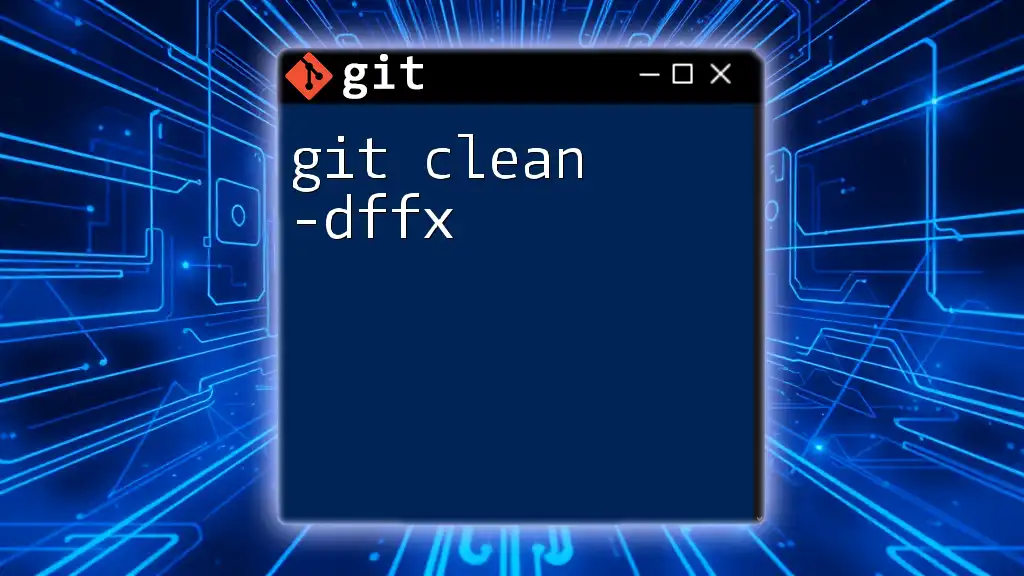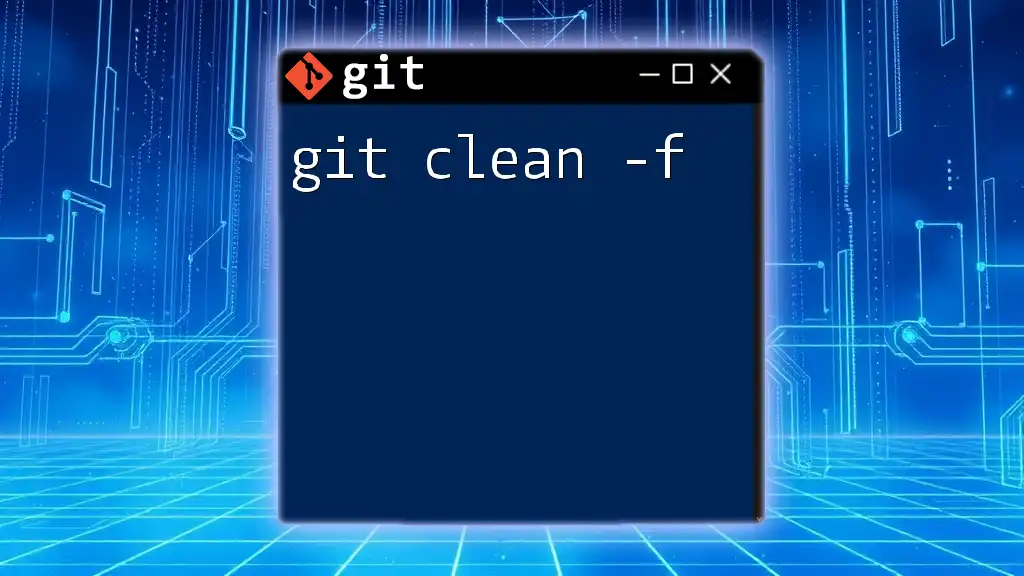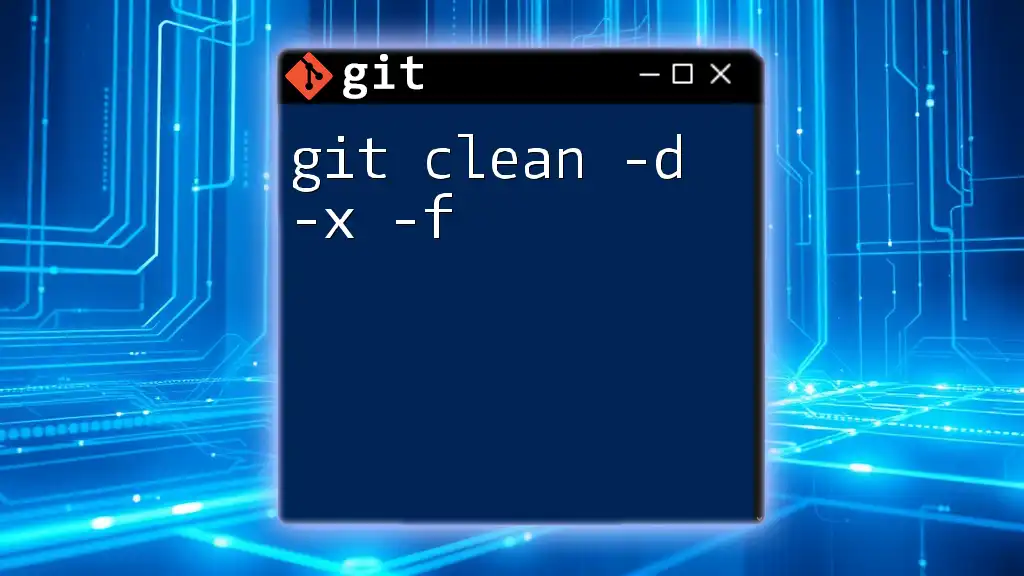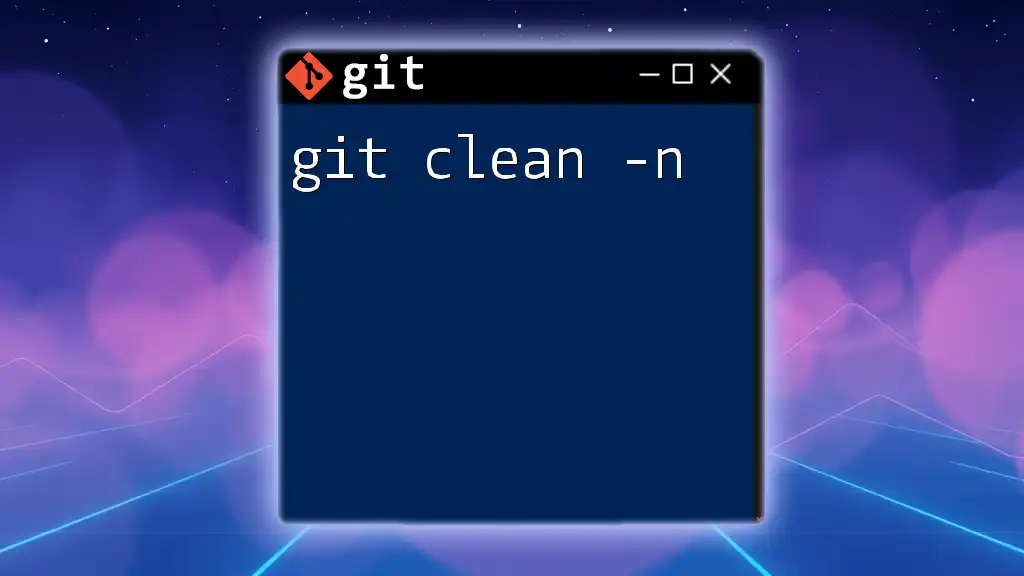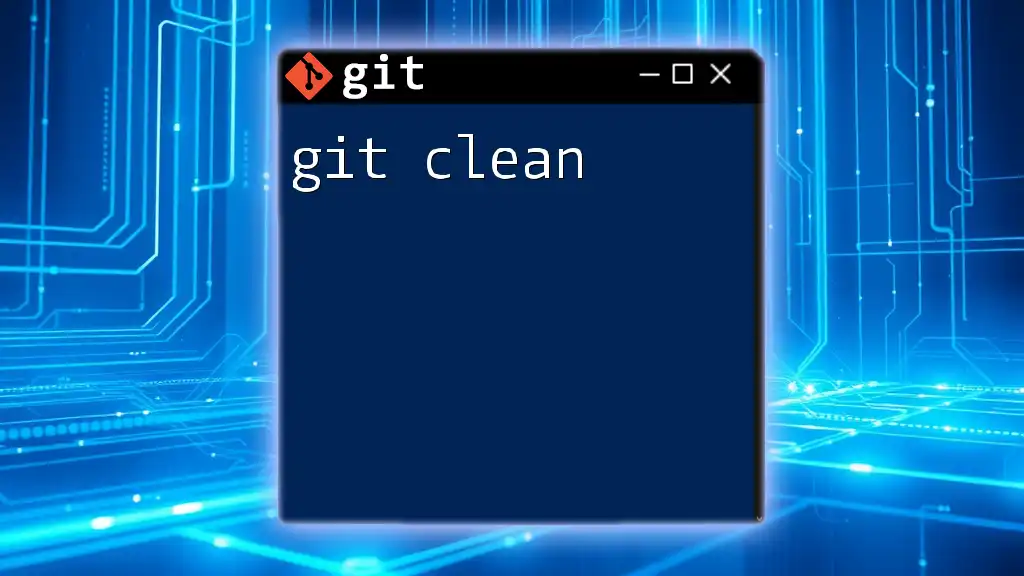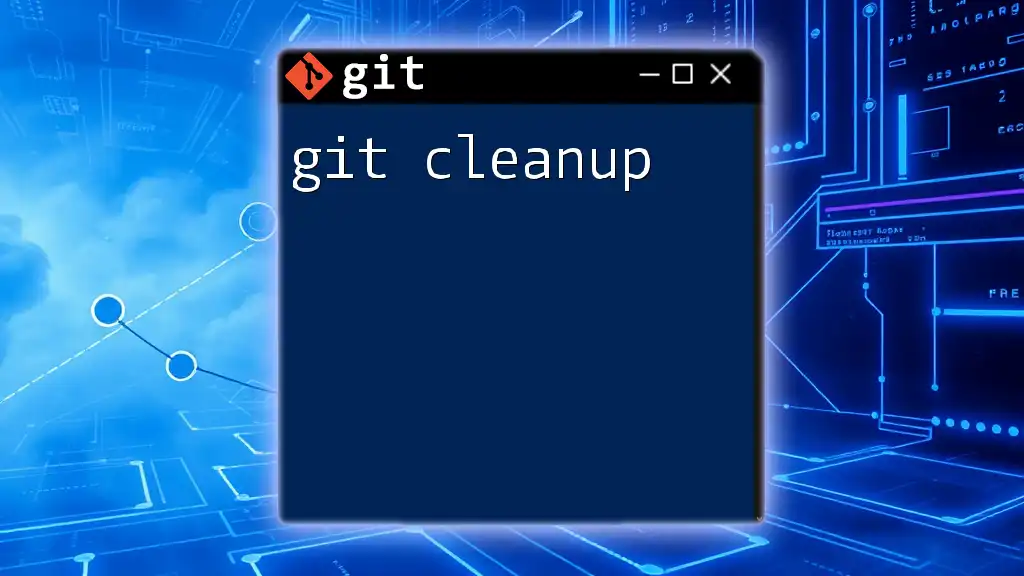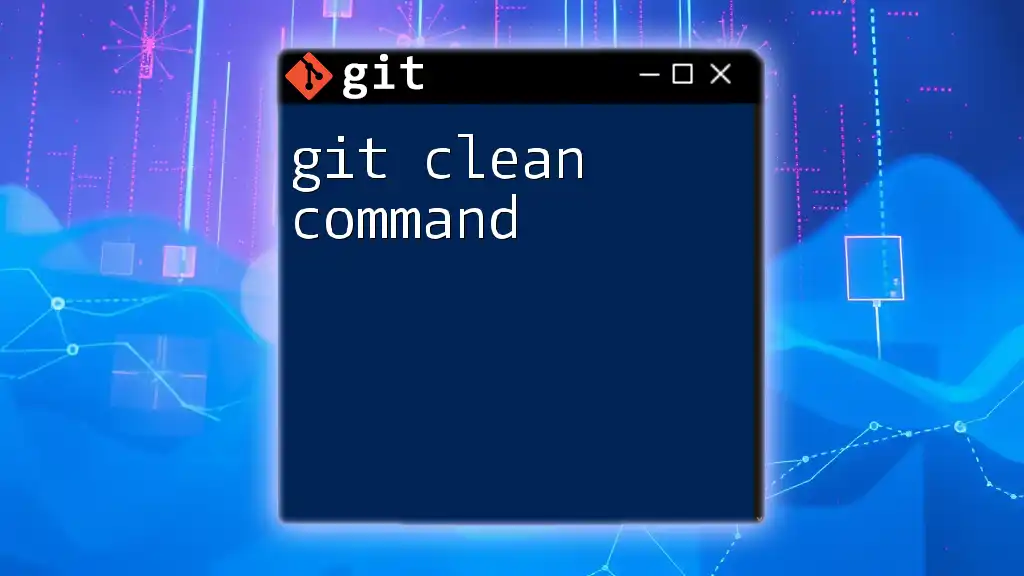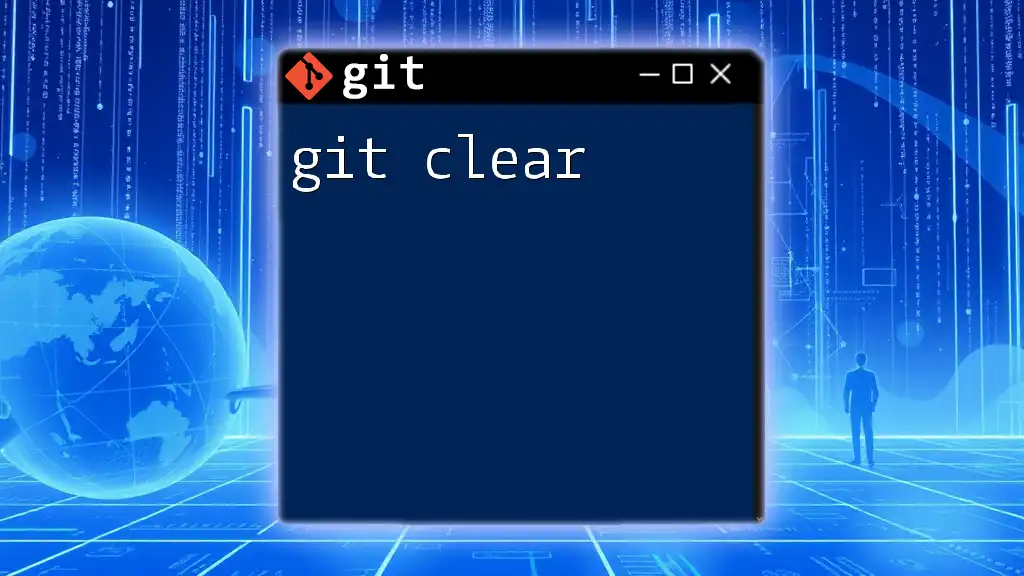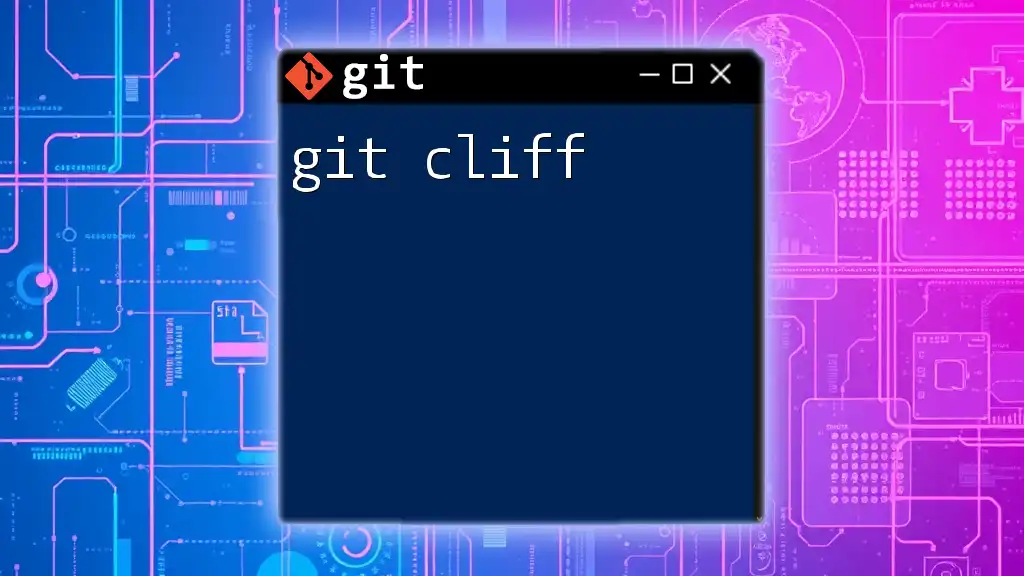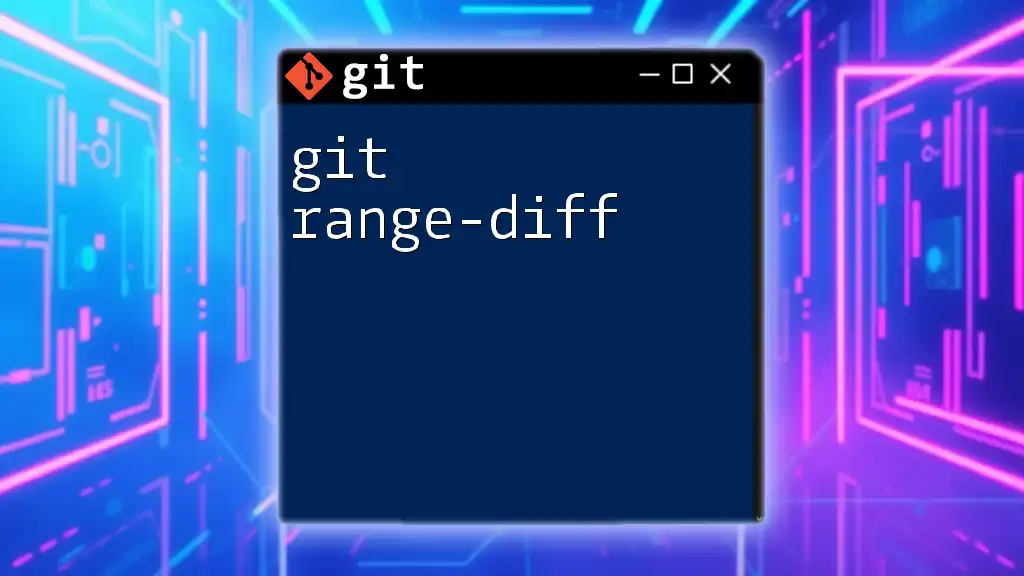The command `git clean -dffx` forcefully removes untracked files and directories in your Git repository, ignoring any .gitignore settings.
git clean -dffx
Understanding the Basics of `git clean`
What is `git clean`?
The `git clean` command is a powerful tool in Git used to remove untracked files from your working directory. When working on a project, you may end up with numerous files that are not under version control—these could be temporary files, build artifacts, or other clutter. The purpose of `git clean` is to help you maintain a clean and organized repository by removing files that are not tracked by Git.
Common Use Cases for `git clean`
- Cleaning up untracked files in a workspace: As your project grows, it’s common to accumulate unnecessary files. `git clean` enables you to quickly remove these files in one command.
- Preparing for a clean build in a project: Before initiating a new build, it’s crucial to ensure that no leftover files from previous builds interfere with the new one.
- Preventing overlooked files from cluttering a repository: Regularly cleaning your workspace helps to avoid confusion and potential issues down the line by ensuring that your environment is tidy.

Understanding the Options: Breaking Down `-dffx`
The `-d` Option
The `-d` option allows you to include untracked directories in the cleaning process. Without this option, `git clean` only removes untracked files. For instance, if you have a directory containing build or temporary files that are untracked, using the `-d` option ensures these directories are cleaned as well.
To use this option:
git clean -d
When cleaning up, remember that directories may also contain critical files. Exercise caution when using this option to avoid accidental data loss.
The `-f` Option
The `-f` option stands for "force." Git will not perform cleaning without this option being specified to prevent unintentional deletion of files. It ensures you expressly permit the removal of untracked files and directories.
To apply the command:
git clean -f
It is critical to remember that without the `-f` flag, Git will reject the operation. If in doubt, conduct a review of untracked files before forcefully cleaning.
The `-f` Option (Second Instance)
When using both instances of `-f` (as in `git clean -dff`), the command forces Git to remove ignored files as well. Ignored files are those listed in your `.gitignore` file. While the default behavior of `git clean` is to leave these alone, specifying `-f` grants you the power to remove them, as well.
An example command would be:
git clean -f -x
Using this option can be helpful during significant restructuring, but handle it with care. Eliminating files that are intentionally ignored can lead to irreversible loss of essential data.
The `-x` Option
This option tells Git to remove all ignored files alongside untracked ones. The `-x` flag is aggressive in cleaning, and repercussions from misusing it may be severe, as it does not discriminate between essential configuration files and temporary files.
To execute this command, run:
git clean -x
Use this option only when you are certain about the ignored files being safe to delete, as data recovery may not be feasible without backups.

Combining Options: Using `git clean -dffx`
The Complete Command Explained
When you combine all the mentioned options (`-dffx`), you create a command that forcefully cleans your working directory by removing all untracked files and directories and also any ignored files. The comprehensive command would be:
git clean -dffx
Real-world Example
Imagine you’re working on a project where various build artifacts and temporary files are cluttering your workspace. Running this command would swiftly restore your directory to a tidy state, removing all those files that are not part of the version-controlled history.
However, it’s essential to be mindful of the implications of this command. Running it can lead to the removal of files you may need in the future, so always back up critical information before execution.
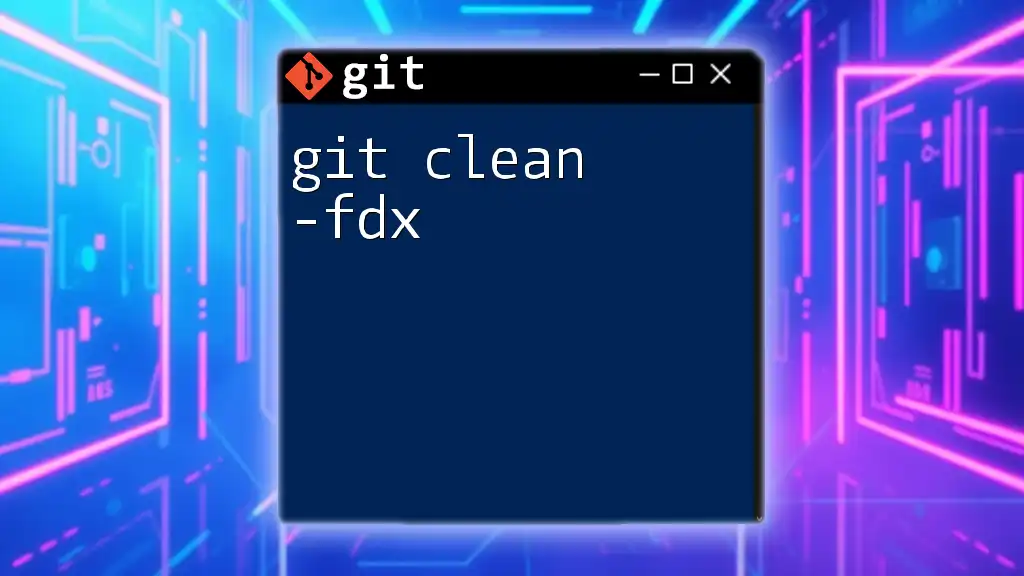
Safety Measures Before Running `git clean`
Double-checking with `-n` or `--dry-run`
Before you execute a potentially destructive command, it’s wise to perform a dry run. The `-n` or `--dry-run` option does just that—it simulates the command, displaying what will be removed without actually deleting anything.
To preview the effects of your command, you would use:
git clean -dffxn
This step helps you visualize the outcome and avoid unintentional data loss, especially if you are uncertain about the contents of your directory.
Making Backups of Important Files
In software development, ensuring that important files are not lost in the cleaning process is paramount. Regularly stashing untracked changes or files can help guard against accidental deletions. To safeguard your essential files, you can use:
git stash
This command stores uncommitted changes, allowing you to restore them later even after a clean.
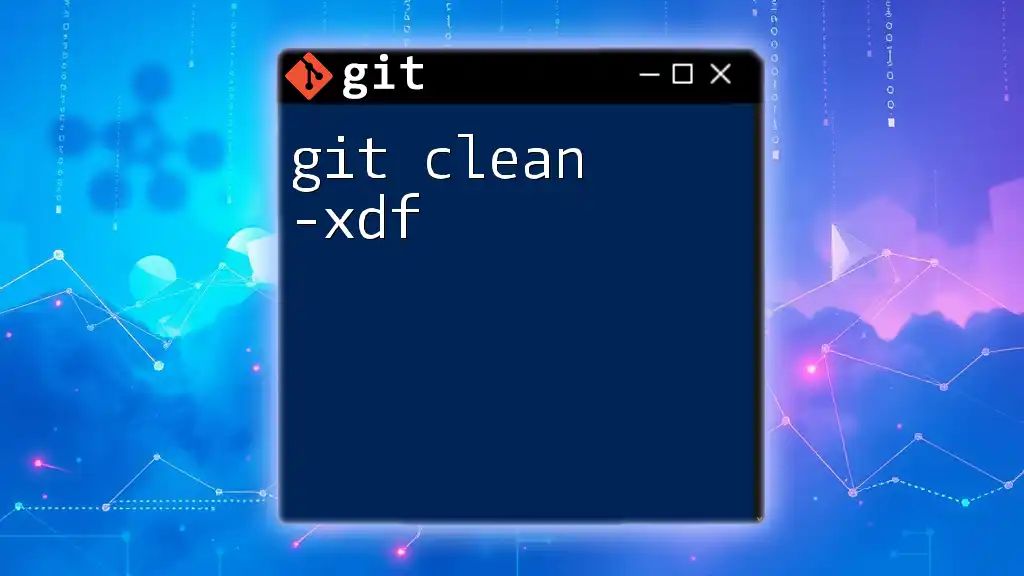
Potential Pitfalls and How to Avoid Them
Accidental Deletion of Important Files
Errors in using `git clean` can lead to the loss of critical files. Users have found themselves in challenging situations after running a comprehensive clean without appropriate backups. It's vital to verify that the contents being deleted are indeed candidates for removal.
Situations Where `git clean` Should Be Avoided
There are times when invoking `git clean` could be detrimental, particularly before merging branches or sharing your work. Ensure the workspace is in a committed state before employing a cleanup to prevent losing context or necessary files.
Instead of using `git clean`, consider using `git status` to list untracked files, followed by `git diff` to understand changes before executing commands that modify the working directory aggressively.
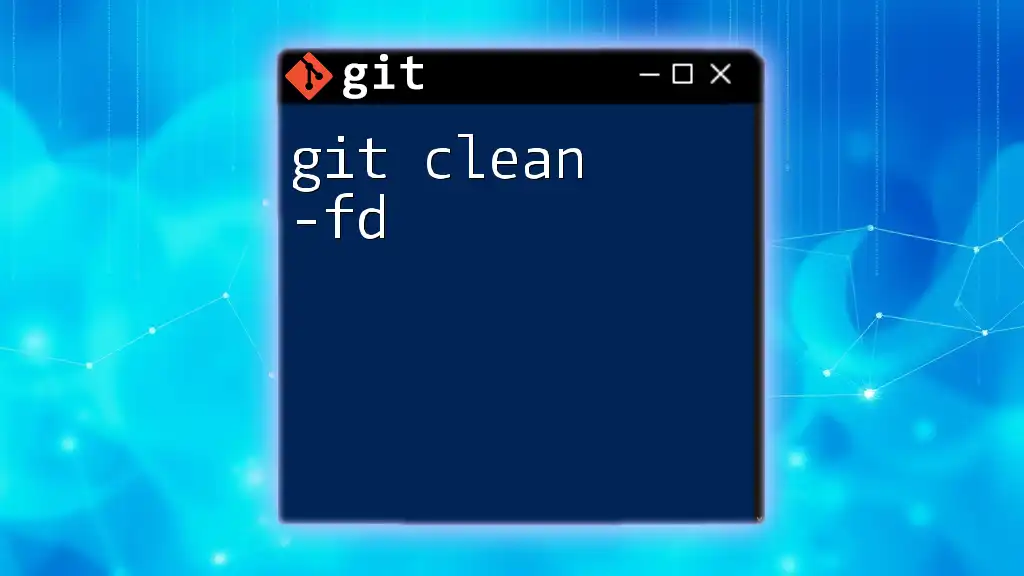
Conclusion
The command `git clean -dffx` is an essential tool for any developer looking to manage files effectively within their Git repository. While it’s a powerful means of keeping your workspace uncluttered, careful application and proper safety measures are critical to preventing unintentional deletions.
By practicing safe cleaning methods and embracing Git's powerful commands, you can ensure your development environment remains efficient and organized.

